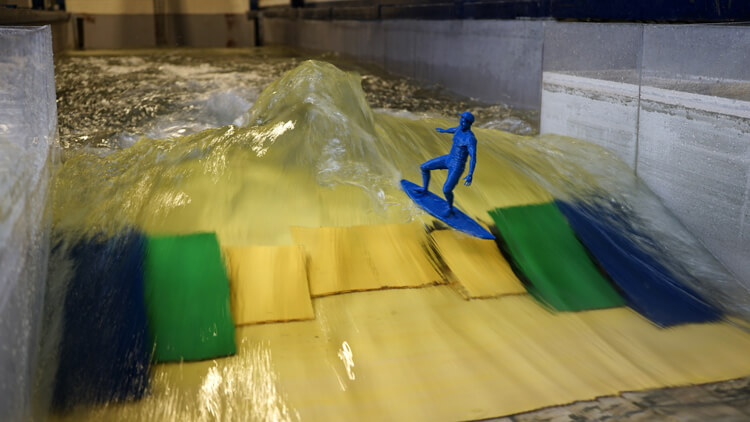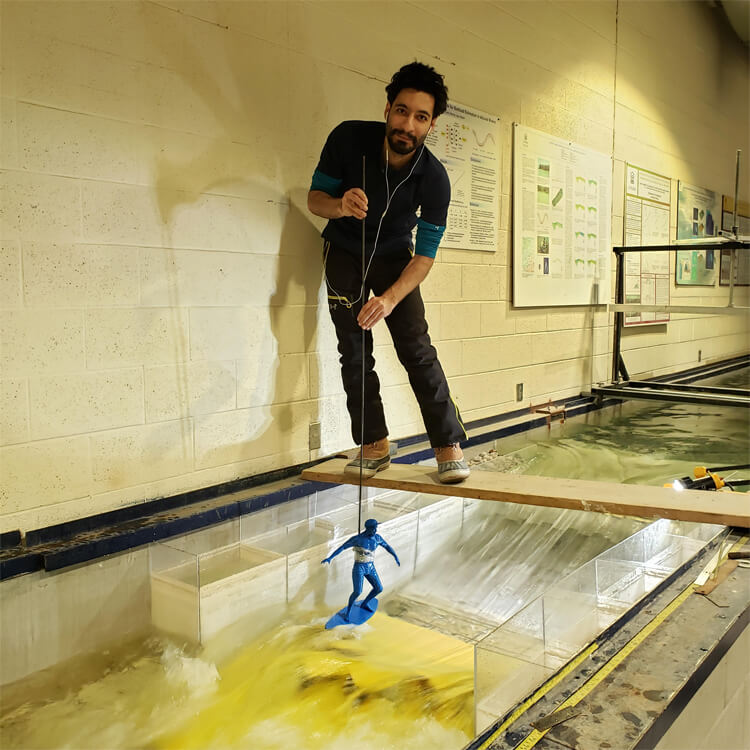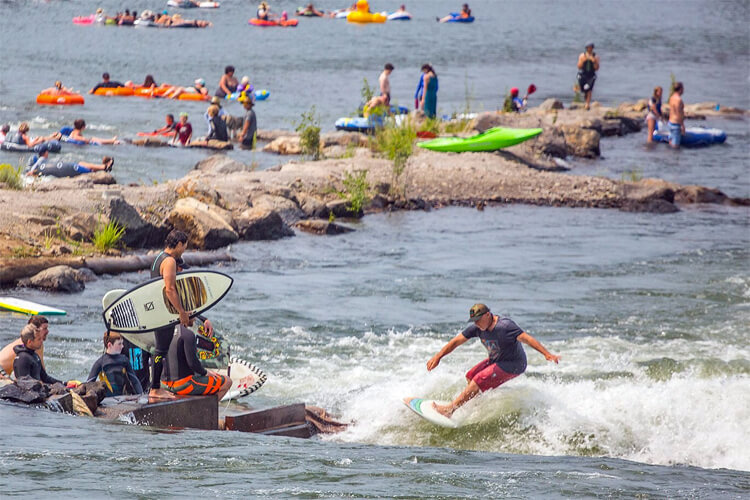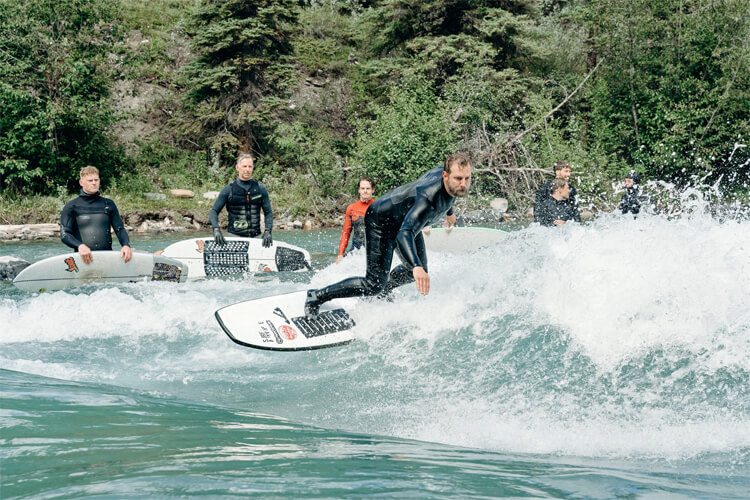A group of academics and river surfing experts teamed up to change the way river surfing waves are built. And you're invited to build your own inland roller.
The project led by Canadian river surfing enthusiasts Surf Anywhere tested different river wave shapes that can be built in future projects to increase performance beyond the standard builds seen in river waves today.
Researching new designs will allow waves in the river to more accurately reflect ocean surf waves, bridging the gap between river surfing and its ancestor ocean surfing.
This opens the way for Olympic-level training and inland surfers to surf competitively in the ocean.

From 2D to 3D
River waves have been built in white water parks and chlorinated pools for over a decade now, but the same two-dimensional shapes keep getting built over and over again.
Today, researchers are working to transform two-dimensional river surfing into three-dimensional playgrounds surfers have never seen before.
After developing the technology in the lab, Neil Egsgard, the founder of Surf Anywhere, believes this tech can be applied to any standing wave project in the world.
"River waves have already shown to provide lasting economic, cultural, and recreational benefits," Egsgard tells SurferToday.
"But the bottom line is these things make people really happy. This research is important for progressing the sport and seeing more waves being built in more places."
The ability to shape waves can rapidly increase progression in the sport and even act as a training ground for professional surfers looking to work on specific skills in a controlled environment.
This research is ongoing, and the team at Surf Anywhere hopes to discover new ways of building surf waves in rivers.

The Kicker System
The new design uses kicker plates that move forward and back in what Neil Egsgard calls a "3D wave channel."
The team has already spent these six months researching the new tech and developing wave shapes that look a lot more like ocean waves than anything built today in a river wave park.
Ryan Richard, one of the researchers and the lead wave shaper at the Bend Whitewater Park in Oregon, believes this tech can build wave shapes even better than anything found in nature.
In an effort to accelerate surf wave development in rivers, they have published their work as open source.
The team has completed its initial stages of research and, if successful in fundraising, is hoping to build its full-scale model in the Kananaskis River in Alberta in the upcoming years.
Until then, they are hoping river surf waves follow the path of skatepark-building, offering access to waves to unlikely places far from any ocean.
The research involved Surf Anywhere, the University of Ottawa, Mitacs, the Alberta River Surfing Association, and the Alberta Whitewater Association.
The initial results have already been published at surfanywhere.ca/wave-research. Ultimately, Surf Anywhere plans to make the river wave designs open for use in any project across the world.

Types of Artificial River Waves
The result allows river wave entrepreneurs to create the following types of artificial river waves for surfers, bodyboarders, and kayakers:
- Perpendicular wave;
- Bowl wave;
- Left or right bowl wave;
- Oblique wave;
- Oblique to perpendicular wave;
- A-frame wave;
- Perpendicular wave with pile using attack kickers;
- Wave with pile using attack kickers at the end of the channel;
- Bowl outside of channel;
- Oblique to bowl outside of channel;
The most common manufactured river wave is the perpendicular wave.
It breaks perpendicular to the river's direction, shows a very similar height and contour across the entire wave, and features a high tailwater that starts to break the wave at the sides.
The bowl wave has not yet been developed at full scale.
Its shoulders are upstream of the center of the wave, feature a mirrored contour on the left and right sides, and showcase a higher wave height in the middle, where both shoulders meet.
The oblique wave has also not been tested in a natural environment.
It resembles a point break with one side of the wave positioned upstream and the rest downstream. Its wave height is progressively higher as it breaks downstream.
The A-frame wave should also be a popular option.
It features symmetrical left and right sides, with the highest area being on both sides and the middle of the wave being upstream.
The Anatomy of the River Wave
A river surfing wave comprises ten critical characteristics:
- Headwater: the water upstream of the wave;
- Tailwater: the water downstream of the wave;
- Drop: the difference in elevation between the headwater elevation and the tailwater elevation;
- Slope: the fixed or adjustable slope between the headwater and the tailwater;
- Kicker: the fixed or adjustable structure that helps redirect water and shape the wave after going down the slope;
- Trough: the lowest elevation of water at the transition from the slope to wave;
- Wave: the surfable area formed by water going over the slope and kicker;
- Wave channel: the channel between the headwater and the tailwater where the wave forms and consisting of slope and kicker;
- Bypass channel: the channel that allows water to go from the headwater to the tailwater without going down the slope. It is used to control the headwater elevation, the flow through the wave channel, the fish passage, and the alternate route that avoids the breaking wave;
- Adjustability: the ability for wave components to move in a controlled manner. All wave components must be adjustable for high wave quality over a large flow range;
